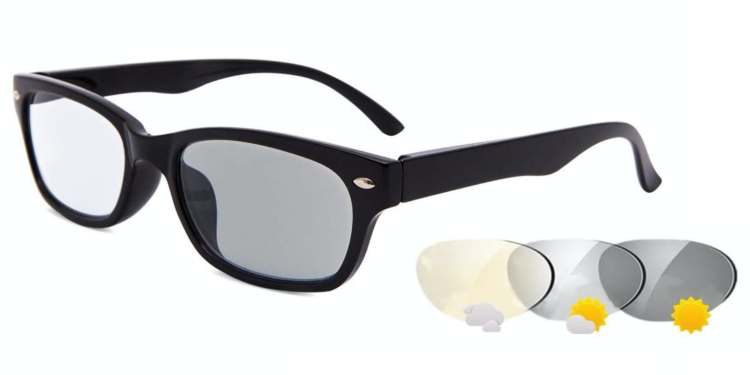As Apple’s augmented reality glasses continue moving closer to their reported 2020 launch date, the company’s patents are providing a paper trail of some of the key concepts its engineers have been working on. Today, a newly published patent application establishes how the company could transition its AR glasses into either a VR mode or higher-contrast AR mode, using photochromic lenses with opacity controls, much like modern smart windows.
Discussing its invention solely in terms of a head-mounted display, Apple refers to the technology as an adjustable opacity system — a layer within the lenses that uses ultraviolet light to control the level of lens transparency from clear to opaque. Sunglasses with a more basic form of the same concept became popular 20 years ago, automatically shifting to darker tints when they went outside and were exposed to the sun and becoming more transparent when worn indoors.
The system Apple is proposing isn’t passive or even necessarily full-lens in scope; rather, it can “selectively darken portions of the real-world light from view.” Miniature mirrors can direct ultraviolet light to individual pixels within the lens, dimming or fully blocking light “to allow improved contrast when displaying computer-generated content over the real-world objects.”
Current AR glasses are typically stuck with a single level of lens transparency that can make digital content look ghostly, while providing a simultaneous “mixed” view of real and digital elements. Assuming Apple’s system is as capable as the patent suggests, the lenses could go partially opaque in a manner that boosts the brightness of digital objects, or potentially fully opaque in a manner akin to VR glasses.
Whether the photochromic lenses appear in Apple’s AR glasses remains to be seen. While it’s fairly easy to apply for a patent on a technology like this, the concept contemplates the use of pixel-sized micro-mirrors and potentially even a heating element, which might drive up the headset’s cost, size, and electronic complexity, much like using retinal projectors instead of basic screens. On the other hand, implementing the feature could make the glasses useful under more conditions.
If Apple’s rollout proceeds according to the expected schedule, we’ll know more next year. Some support for stereoscopic AR glasses was recently discovered in beta versions of iOS 13.

